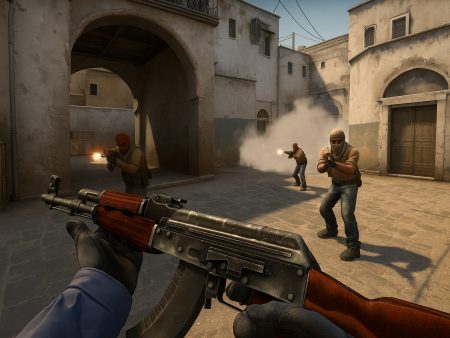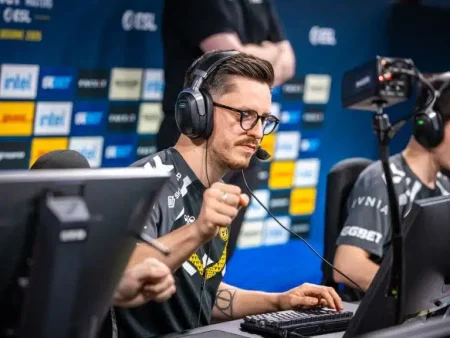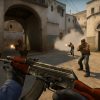Master CS2 spray patterns and recoil control with this in-depth guide. Learn pro techniques, practice routines, and weapon-specific tips to improve your aim and win more fights.
If you’re serious about improving your aim in Counter-Strike 2 (CS2), mastering spray patterns and recoil control isn’t optional—it’s essential. Unlike many shooters where you can rely on raw aim or simple crosshair placement, CS2 challenges you with a layer of depth: recoil mechanics. Whether you’re holding angles or pushing aggressively, how well you control your weapon’s spray can make the difference between clutching a round or getting one-tapped. This guide breaks down every aspect of CS2’s recoil and spray system—from basics to advanced techniques. So, let’s jump into it and tighten up your game.
Introduction to CS2 Gun Mechanics

What Makes CS2 Different from CSGO
The jump from CSGO to CS2 isn’t just about better graphics and new maps—it’s a whole new engine, physics system, and weapon feel. The Source 2 engine has subtly redefined how guns behave. Recoil now feels a tad more responsive and slightly more random, though core patterns remain similar. Bullet tracers are also more visible, which adds a visual layer to controlling spray. Movement and gunplay feel snappier, but the fundamentals haven’t changed: if you don’t control your spray, you’re going to miss—badly.
The recoil feels more “fluid,” thanks to Source 2’s updated physics. This means each shot affects your next shot more dynamically than before. Players who were gods in CSGO might feel slightly off in CS2 until they adjust. Spray patterns aren’t carbon copies of CSGO’s—they’re similar but modified, with a tighter feel and different pacing.
CS2 also emphasizes environmental interactions more heavily. Smokes are now volumetric, and utility can influence your decision to spray or not. For example, spraying through a smoke is riskier due to tracers giving away your position.
Importance of Understanding Spray and Recoil
Spray control isn’t just a “nice-to-have” skill—it’s a core mechanic that separates casual players from competitive ones. Without it, you’re just relying on RNG and panic sprays. You’ll miss shots you should land and lose fights you could’ve won. Recoil knowledge allows you to extend gunfights with confidence. It empowers you to take fights on your terms, especially in multi-frag situations where you don’t have time to reset your aim between enemies.
Knowing spray patterns also helps you predict what your enemies might do. If they’re likely to miss the first few bullets due to poor recoil control, you can jiggle peek and punish. If they’re holding close with an SMG, you might pre-fire and adjust your spray accordingly.
Fundamentals of Recoil in CS2
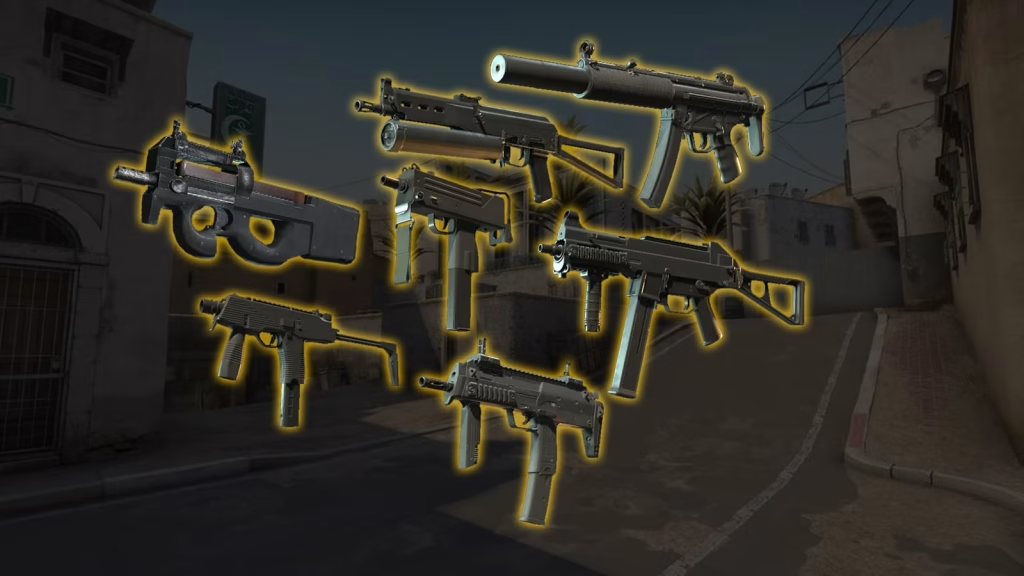
What Is Recoil in CS2?
Recoil is the upward and side-to-side movement that happens when you hold down the fire button. It pulls your crosshair off target, causing bullets to scatter in a specific, repeatable pattern. In CS2, each weapon has its own signature recoil profile, but the pattern tends to follow a general upward-left-right sway. It’s not completely random—there’s a method to the madness, and mastering that method means landing more shots consistently.
When you fire continuously, the gun’s barrel climbs due to recoil. Each subsequent bullet veers off the crosshair unless you’re compensating. This is where muscle memory kicks in: learning how to pull your mouse in the opposite direction of the spray pattern to cancel out the recoil.
One key detail in CS2 is that the first few bullets are the most accurate. If you’re shooting a three- to five-round burst, you’re still within the weapon’s tighter spray pattern. Hold the trigger too long without controlling it, though, and you might as well be shooting paintballs at a wall.
How Recoil Affects Accuracy
Let’s make this super clear: recoil is the #1 reason your shots miss in CS2. You could have perfect aim placement, but if you don’t control the spray, your bullets will go anywhere but your target.
Recoil directly affects bullet trajectory. Even if your crosshair is dead center on someone’s head, the fourth or fifth bullet might miss entirely due to vertical or lateral recoil. That’s why “spray transfer” is an advanced skill—it involves not just controlling vertical climb but also tracking your new target mid-spray.
Accuracy is also influenced by how fast you’re firing. Weapons like the AK-47 or M4 have rapid-fire rates, and once recoil kicks in, those bullets start flying off in all directions unless corrected. This is why some players choose to tap or burst instead of spraying.
There’s also the concept of accuracy recovery time. When you stop moving or stop firing, there’s a brief delay before your aim resets to full accuracy. Managing this timing can help you reset mid-fight, rather than spraying mindlessly.
Spray vs Tap vs Burst Firing
Each firing method has its purpose:
- Tapping: One shot at a time. Best for long-range engagements where precision matters most. Ideal when holding angles or peeking mid from long range.
- Bursting: Quick 2-4 bullet bursts. Useful for medium range. Offers a balance between recoil control and DPS (damage per second).
- Spraying: Holding the trigger down. Best for close-range fights or when catching multiple enemies off-guard. But it requires practice to land shots consistently.
Top players know when to spray, burst, or tap based on distance, cover, enemy movement, and their own confidence with the gun. If you’re spraying at long range without compensating recoil? You’re doing it wrong.
Understanding Spray Patterns

How Spray Patterns Work
Spray patterns are predefined movements your bullets make when you fire full auto. For example, the AK-47’s spray pattern typically starts by climbing vertically, then sways left and right in a snake-like path. These patterns are the same every time (unless you move while spraying), which means you can learn them—and beat them.
In CS2, spray patterns are slightly different from CSGO. The early recoil is similar, but the side-to-side movement is more nuanced. That means old habits need adjustment.
To counter the pattern, you need to pull your mouse in the opposite direction of the bullet spread. If the spray pulls up and to the right, you pull down and to the left. The trick is to match the pace, not just the direction. Going too fast or slow will throw your aim off.
Here’s what you can expect from most rifles:
- AK-47: Vertical climb, then aggressive left-right sway.
- M4A4: Slightly more vertical, tighter lateral movement.
- M4A1-S: Easier control, but slower fire rate.
Mastering the spray pattern allows you to land 5, 10, or even 15 bullets on target during a single spray, making you deadly in close to mid-range fights.
Mastering the Top Rifles
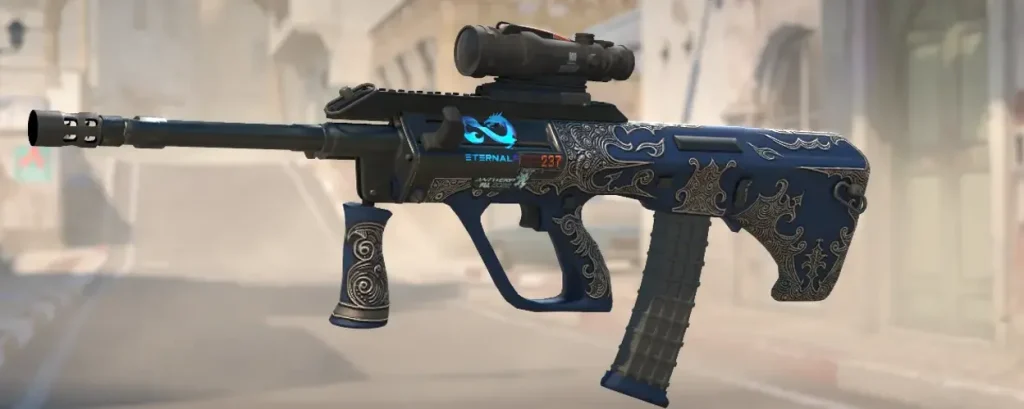
AK-47 Spray Pattern and Recoil Tips
The AK-47 is a beast in the right hands. High damage, one-tap headshot potential, and brutal spray. But it’s also unforgiving—you miss your shots, and you’re done. The AK’s spray pattern is complex but learnable.
Spray starts with a straight vertical line for the first few bullets, then it pulls sharply to the left, then back to the right. The first 5 bullets are relatively easy to control—aim at the chest and drag down slightly. Past that, it becomes a matter of rhythm.
Tips to master AK-47 spray:
- Practice the first 5 bullets until they’re muscle memory.
- Use recoil control maps in CS2’s workshop to practice full sprays.
- Spray while crouching when holding tight angles—it helps tighten bullet spread.
- Pull your mouse gently, not too hard, and match the pace of the pattern.
The AK is less forgiving when you miss, so don’t spray unless you’re confident or in close range. Always go for headshots when tapping, and use bursts at medium range.
SMGs and Pistols: Easier but Tricky
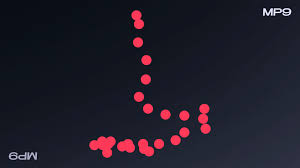
MP9, MAC-10, and UMP Spray Control
SMGs like the MP9, MAC-10, and UMP-45 are beginner-friendly due to their low cost and high fire rate. But don’t be fooled—they have their own quirks when it comes to recoil. These weapons are often used on eco or force rounds, which means you’ll frequently rely on them in risky situations. Knowing how to spray properly with them can turn a cheap buy into a deadly threat.
Let’s break them down:
- MP9: Insanely fast fire rate and minimal recoil in short bursts. It’s a CT favorite for close-range pushes. The spray pattern goes up with a mild curve to the right. Great for holding tight corners or rushing down T-side entries.
- MAC-10: This T-side SMG is chaotic in recoil but powerful up close. The spray climbs quickly, and the lateral movement kicks in early. Best strategy? Aim for the upper chest and pull down slightly. It’s a run-and-gun weapon, so mobility is key.
- UMP-45: Slower than the others, but more accurate. Its spray pattern is more forgiving, going almost straight up with light deviation. It rewards players who burst instead of full-spray.
Pro tips for SMG spray control:
- Always crouch while spraying for tighter bullet grouping.
- Don’t overextend. These guns lose effectiveness past medium range.
- Use your movement: strafe and counter-strafe before shooting for max accuracy.
- Spray in short bursts rather than holding mouse1.
While SMGs are forgiving for new players, controlling their spray effectively can give you the edge in anti-eco rounds and close-quarter skirmishes. Learn each one’s spray pattern separately to optimize usage.
Pistol Recoil and Accuracy Tips
Pistols behave differently from rifles and SMGs—they don’t have traditional “spray patterns,” but they do suffer from recoil and inaccuracy if spammed. In CS2, pistol accuracy decreases rapidly when you fire too quickly, making rhythm the most important factor.
Let’s look at some key pistols:
- Glock-18: Good for tapping or burst mode. Inaccurate if spammed. Tap at a steady pace for better accuracy.
- USP-S: Precise first shot, almost no recoil for the first few taps. Slow your shots to retain accuracy.
- Desert Eagle: High recoil, extremely deadly. Wait for your crosshair to reset between each shot—spamming it turns it into a random bullet generator.
- Five-SeveN / Tec-9: Great armor penetration and higher bullet count. Slight recoil and bullet spread after 4–5 shots. Best used in quick bursts.
- P250: Reliable eco pistol. More accurate than a Glock when tap-fired.
Recoil tips for pistols:
- Don’t spam. Even semi-auto pistols lose accuracy quickly.
- Aim for the head and fire in a controlled rhythm.
- Know the reset time between shots (watch the crosshair for recoil recovery).
- On eco rounds, pair pistols with good positioning for maximum effectiveness.
Mastering pistols gives you a fighting chance in otherwise hopeless rounds. Timing, aim, and confidence are the keys.
Best Practice Techniques to Improve Recoil Control
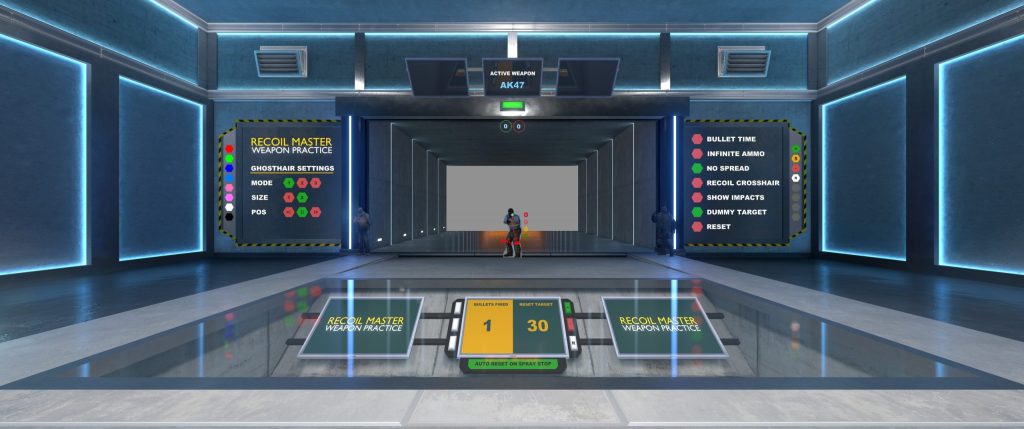
Crosshair Placement and Movement
Before you even worry about recoil, crosshair placement is your foundation. If your crosshair is already at head level and aimed where an enemy might peek, you’ll need less correction when shooting. Combine this with recoil control, and you’ll land shots way more consistently.
Why crosshair placement matters:
- Reduces the amount you need to move your mouse.
- Allows for quicker reaction time.
- Helps your recoil compensation start on target.
Movement also plays a role. If you’re moving while firing, your bullets will go wild—even with perfect recoil control. That’s why learning counter-strafing (tapping the opposite movement key to stop instantly) is critical. It lets you stop, shoot with full accuracy, and control the spray.
Tips to improve:
- Always aim at head level when clearing angles.
- Pre-aim common enemy positions before peeking.
- Strafe left and right while practicing counter-strafe shots.
- Practice “jiggle peeking” and transitioning into a spray when spotting enemies.
Once your crosshair placement becomes second nature, recoil control becomes significantly easier—because you’re already halfway to landing the first few bullets.
Training Routines for Recoil Control
If you’re serious about mastering recoil, you can’t just rely on matchmaking or casual games. You need deliberate, focused practice.
Here’s a step-by-step routine to improve your recoil control:
- Warm-up with 5–10 minutes of aim tracking in a map like Aim Botz or Recoil Master.
- Pick one gun per day to focus on (e.g., AK-47 on Monday, M4 on Tuesday).
- Practice full sprays on static targets, then on moving ones.
- Record your sprays and see how many bullets hit center mass or head.
- Spray while crouching, walking, and standing to get a feel for inaccuracy under different conditions.
- Spray transfer drills: Try killing two bots by spraying from one to the other.
Consistency is key. Practicing 30 minutes a day is better than going hard once a week.
Using Aim Trainers and CS2 Workshop Maps
External aim trainers like KovaaK’s, Aim Lab, or Aimtastic can help develop raw muscle memory, but for recoil control, in-game practice is king.
Recommended CS2 workshop maps:
- Recoil Master: Visualizes bullet paths in real-time and lets you trace over correct spray patterns.
- Yprac Arena: Offers custom spray training scenarios and tracking tools.
- Aim Botz (CS2 version): Great for warming up and practicing recoil against bot spawns.
- Reflex Training Map: Helps improve quick reaction shots combined with recoil drills.
Why use these maps:
- No pressure of real matches.
- You can isolate specific skills.
- Immediate feedback helps correct bad habits.
Use a combination of aim trainers and workshop maps to fine-tune your control. The goal is to make spray correction feel instinctual—not something you consciously think about.
Understanding Movement and Its Effect on Spray
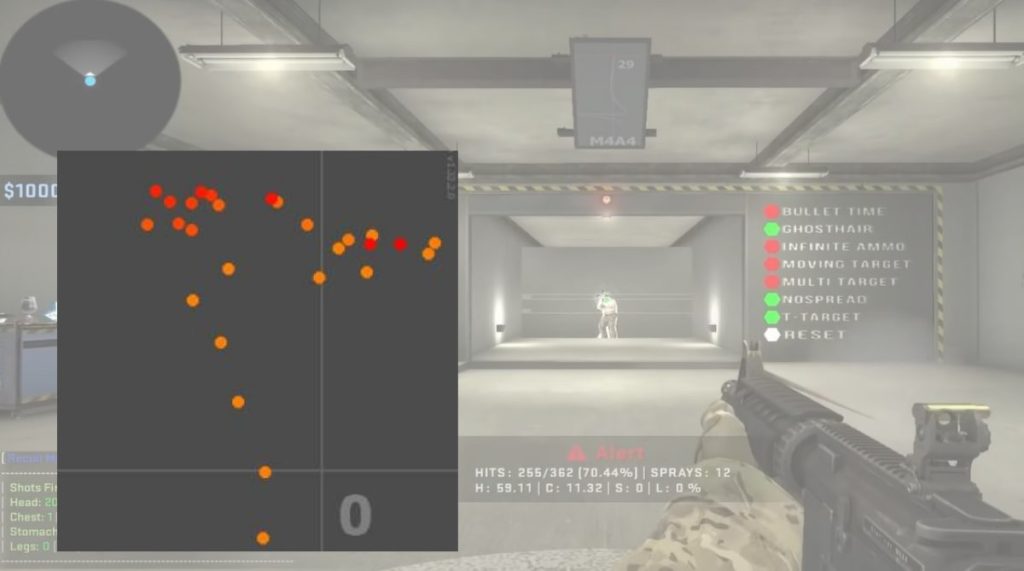
Movement Inaccuracy Explained
Here’s something many new players overlook: even if your spray control is perfect, if you’re moving, your bullets will miss. Why? Because CS2 has a built-in mechanic called movement inaccuracy—and it’s brutal.
When you move, your gun’s accuracy tank. This is particularly true with rifles like the AK and M4. Even walking slightly while shooting causes your shots to veer wildly off-course.
Every weapon in CS2 has “standing accuracy” vs “moving accuracy” stats, and the difference is night and day. That’s why top-tier players always counter-strafe before shooting—it resets their movement and gives them full accuracy.
Counter-strafing and Shooting While Moving
Counter-strafing is the act of pressing the opposite movement key to stop instantly. For example, if you’re holding “A” to strafe left, tapping “D” will halt your movement almost immediately.
Why does this matter? Because you want to be 100% still before firing to ensure your bullets go where you aim. It also allows you to peek corners aggressively, shoot, and then move back into cover.
How to practice counter-strafing:
- Load into an empty server.
- Pick a target or decal on the wall.
- Strafe left and right, tapping the opposite key to stop.
- As you stop, click to shoot. Try hitting the same spot every time.
Eventually, this becomes muscle memory. You’ll be able to peek, stop, shoot, and retreat—all in a split second.
Pro tip: Some players use this to pre-fire corners while counter-strafing. It lets them clear tight angles while staying accurate and safe.
The Mental Game: Staying Calm During Spray
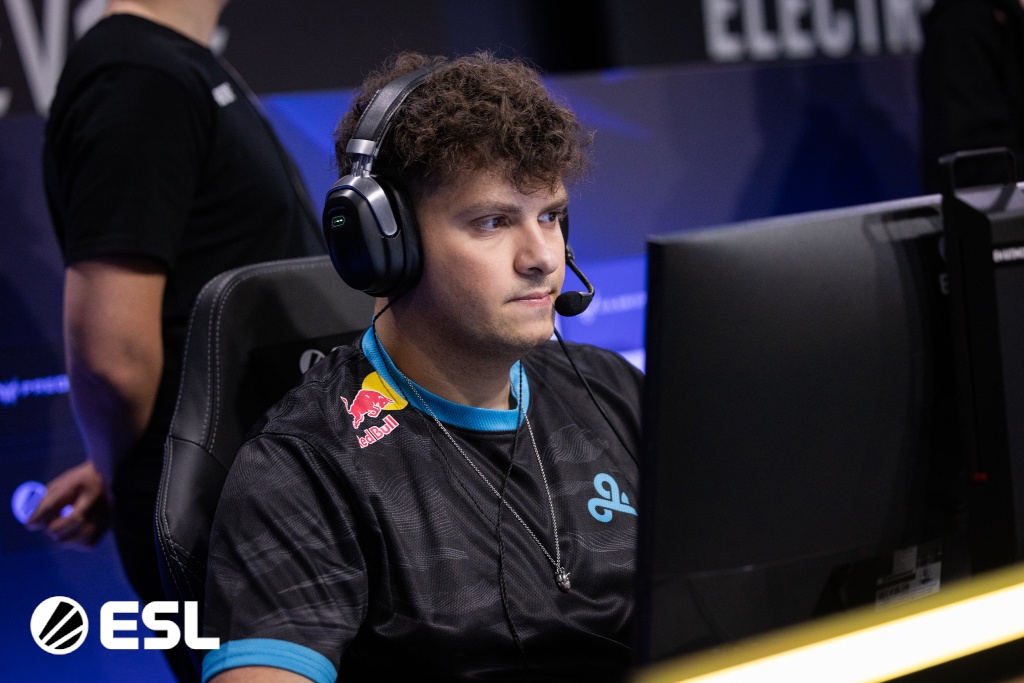
Panic Control and Muscle Memory
Let’s be real—spraying in a 1v2 clutch or high-stakes situation is completely different from spraying bots in a practice map. Why? Nerves. Your hand might shake, your timing gets rushed, and you lose focus. That’s where mental composure and muscle memory come in.
Muscle memory is your brain’s way of offloading complex tasks to your hands. When you’ve practiced a recoil pattern a thousand times, it becomes second nature. You don’t think about it—you just do it. The key is to build this level of comfort with your favorite weapons.
Here’s how to stay calm during spray fights:
- Focus on breathing: Inhale before a fight, exhale while spraying. It sounds dumb, but it works.
- Visualize your spray pattern: Imagine the shape before you shoot.
- Don’t panic-fire: Even in pressure moments, try to start with a burst or tap and adjust.
- Practice under pressure: Set up time-limited drills or 1v1 maps where you simulate pressure.
The goal is to trust your training. If you’ve drilled the AK’s spray pattern enough times, you won’t need to think—you’ll just react. That’s what separates consistent players from streaky ones.
How to Practice Under Pressure
Want to really test your spray control? Create high-pressure environments where you’re forced to execute under stress.
Ideas to try:
- Retake servers: Fast-paced scenarios where you must act quickly and decisively.
- Deathmatch with sound off: Forces you to rely on visual tracking, not sound.
- 1v1 duels or community headshot-only servers.
- Time-based drills: Give yourself 30 seconds to hit a certain number of spray kills.
Also, use visual or auditory distractions (music, loud videos) during training. This builds focus and replicates the chaos of real matches. Pressure training isn’t about making you perfect—it’s about preparing you to stay composed when it counts.
Competitive Edge: Applying Recoil Mastery in Real Matches
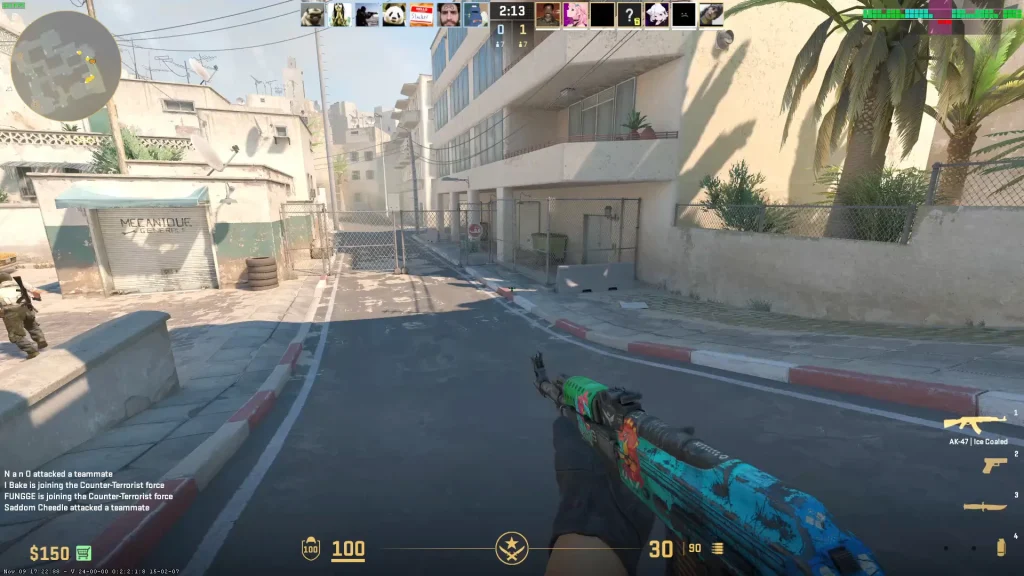
When to Spray, Tap, or Burst in a Match
Knowing recoil is one thing. Applying it at the right time is the real test.
Here’s a breakdown of when to use each firing method:
- Tapping: Ideal for long-distance duels (Mirage mid, Dust2 long). Great for one-tap headshots, especially with AK or USP.
- Bursting: Medium range engagements. Gives a mix of damage and control. Works well when holding mid or pushing slowly.
- Spraying: Close range. Spray when peeking close corners, holding tight angles, or when multiple enemies are rushing.
In-game awareness matters:
- Don’t spray across the map. Your bullets won’t land, even if your aim is solid.
- Avoid full sprays while moving or jumping. Instead, stop and burst.
- Use cover smartly: peek, spray 5–6 bullets, duck back, repeat.
Combine recoil mastery with utility usage (smokes, flashes) to get favorable fights. Flash and spray is a deadly combo when executed right.
Reading Enemy Movement and Adjusting Spray
Smart players adjust their spray based on how enemies move. If an enemy jiggles peeks, don’t spray full-auto—wait, then burst or tap. If you’re up against rushers, you’ll need to track while spraying, leading your crosshair slightly in their direction.
Key adjustments during combat:
- If the enemy moves right, pull your spray slightly left.
- If they crouch mid-fight, adjust your recoil down faster.
- If they jump, don’t panic—fire short bursts and aim lower on landing.
Reading movement in real-time comes with experience. The better your recoil control + game sense, the faster you can adapt your spray.
Pro Player Insights
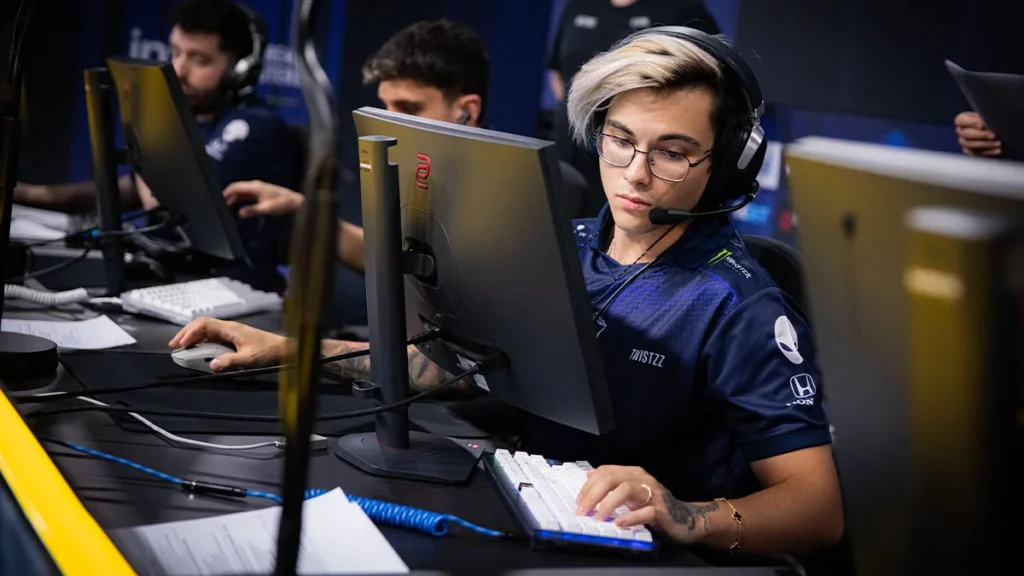
What Pros Do Differently with Recoil
Pros don’t just “react fast”—they have superior recoil discipline. Watch demo clips of players like NiKo, s1mple, or b1t. Their crosshair rarely moves too much. When they spray, it’s calculated, controlled, and timed.
Here’s what makes their recoil so effective:
- They pre-aim common spots, reducing the need for mid-spray adjustments.
- They spray less, tap more—especially in long-range fights.
- They always crouch mid-spray, stabilizing their aim.
- They spray transfer like machines—flicking from one enemy to the next while keeping the spray steady.
Their aim isn’t magical—it’s built on repetition and conscious recoil practice. They’ve spent hundreds of hours perfecting the “feel” of each gun.
Analyzing Pro Spray Control Clips
You can learn a lot by watching POV demos of top fraggers. Use CS2’s built-in match viewer or YouTube VODs.
What to look for:
- When do they start spraying?
- How many bullets before they stop?
- How much do they adjust their mouse during spray?
- Do they track enemies during spray transfers?
Tools like ShadowPlay or OBS can let you record your own gameplay and compare it with pro clips side by side. Try to mimic their patterns and see how yours stacks up.
This kind of visual feedback helps you spot bad habits, like overcompensating or starting the spray too early.
Advanced Techniques for Spray Control
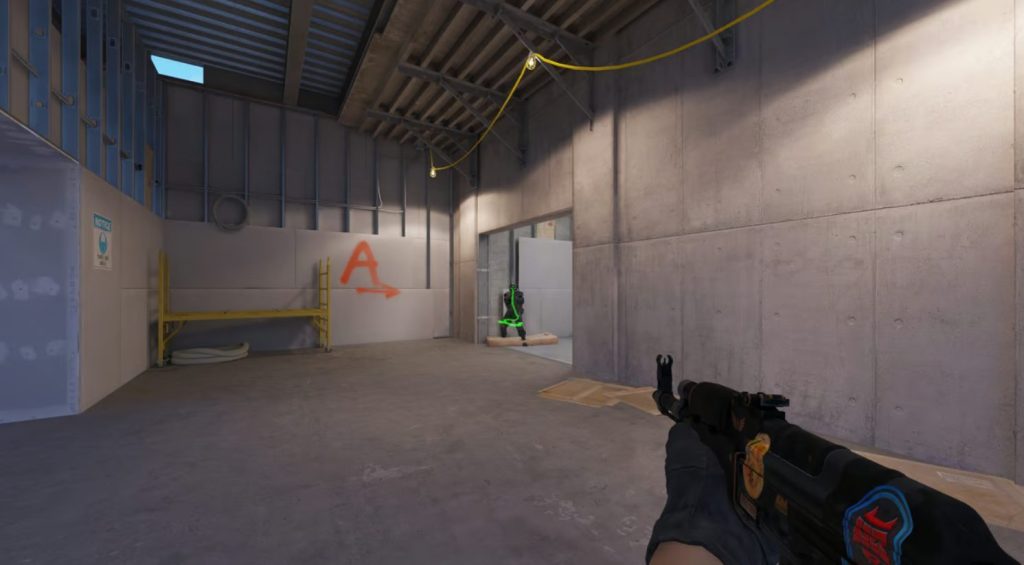
Reverse Recoil Tracking
This high-level technique involves pre-aiming the reverse of a spray pattern, so your first few bullets hit dead center without having to react mid-spray. It’s most effective with weapons like the AK or M4.
For example, you start your spray with your crosshair slightly lower than the target and move up as you shoot, reversing the natural recoil.
Benefits:
- More precise first bullets.
- More consistent spray transfers.
- Reduces overcompensation.
How to practice:
- Pick a gun and map (e.g., AK on Recoil Master).
- Place your crosshair at the end of a spray pattern.
- Reverse-track toward the center while firing.
It’s tricky, but once you master it, you’ll hit more consistent mid-spray shots—especially when fighting multiple enemies.
Using Sound and Timing with Recoil Patterns
Another advanced skill is spraying by feel, not by watching. You begin to “feel” how long you’ve been spraying and adjust your mouse accordingly. This is crucial in situations where vision is limited—smokes, flashes, etc.
How sound helps:
- Spray rhythm becomes muscle memory based on sound (bullet cadence).
- You hear when your bullets start veering off—usually around bullet 6–8.
- You adjust accordingly without even seeing the pattern.
Pro tip: close your eyes and practice spraying on a wall using only sound to guide your adjustments. It might sound strange, but it builds subconscious pattern awareness.
Common Mistakes to Avoid
Overcompensating Spray
One of the most common errors players make when learning recoil control is overcompensation. This happens when you pull your mouse too hard in the opposite direction of the spray, which causes your bullets to drop too low or stray too far off target.
Here’s what it looks like in practice:
- The AK-47’s spray goes up and right, so you pull hard down and left—but you end up shooting below the enemy’s feet.
- You try to correct the M4’s vertical spray by yanking your mouse down, and the bullets land on the ground instead of the chest.
Why does this happen?
- You’re rushing. Trying to “correct” the recoil too fast.
- You haven’t internalized the spray pattern pace.
- You’re panicking mid-fight and reacting instead of controlling.
How to fix it:
- Practice slowly. Speed comes with time. Start by spraying at a wall and correcting only the first 10 bullets.
- Record your gameplay. See where your bullets land during fights.
- Use ghost tracing maps like Recoil Master, which show you your spray path and the ideal one.
The goal is smooth, rhythmic compensation, not jerky or aggressive dragging. Your hand movements should be light, not forced. The best players make spray control look effortless because they’re not overdoing it.
Ignoring First Bullet Accuracy
Another rookie mistake is ignoring the first bullet accuracy. Every weapon in CS2 has near-pinpoint precision on its first shot—if you’re standing still. This means you don’t need to start spraying right away, especially in mid- or long-range duels.
Why it matters:
- The first shot is your most valuable one—land a headshot, and the fight might be over instantly.
- Spraying from the start wastes the opportunity for a clean one-tap.
- Panic spraying at range is nearly always the wrong move.
Tips to maximize first bullet accuracy:
- Take your time when aiming for that initial shot—especially with rifles.
- Counter-strafe before shooting to reset your movement inaccuracy.
- Practice tapping drills to train yourself to wait for the perfect first shot.
If you want to win more duels, especially long-range ones, train yourself to rely on that first bullet. Don’t throw it away by rushing into a spray.
Tools to Analyze Your Recoil

Using Recoil Analysis Software
There are tools outside of CS2 that help you analyze your mouse movement and shot accuracy. These include:
- Aim Lab/KovaaK’s: Great for aim training, but also good for tracking your spray consistency.
- Recoil trainer software: These apps simulate spray patterns and track how close your movement is to optimal compensation.
- Mouse movement recorders: Show how you physically move your mouse during spray patterns.
Why this helps:
- You can see if you’re pulling too hard, too fast, or not enough.
- Some tools offer heat maps of where your shots go.
- Others let you overlay your spray path with the correct one to compare.
Using these tools for just 10–15 minutes a day can dramatically accelerate your learning curve.
Reviewing Demos to Spot Spray Issues
The best learning tool is already built into CS2—your demo viewer. Reviewing your own gameplay (especially losses) reveals a goldmine of information.
What to look for:
- Did your spray start too early?
- Were you moving while spraying?
- Did you miss the first few shots in a duel?
- Did you try to spray too far?
Look for consistent patterns in your mistakes. Do you always over-spray in long-range fights? Are you failing to reset your aim between enemies?
How to review effectively:
- Watch in slow motion.
- Use x-ray mode to see if your shots hit or missed.
- Track your crosshair vs recoil correction during engagements.
Once you spot a habit, go back into training and isolate it. Fixing even one bad habit can instantly boost your consistency.
Conclusion
Mastering recoil and spray control in CS2 is a journey—but one that pays off massively. It’s not just about knowing the patterns; it’s about building the muscle memory, confidence, and decision-making to apply that knowledge in real matches. Whether you’re clutching a round, holding a tight angle, or spraying down a rush, your ability to control recoil will make or break the moment.
This guide covered everything from basic mechanics to advanced techniques used by pros. We talked about the different firing methods, analyzed top-tier weapons, examined common mistakes, and gave you a roadmap to practice like a champion.
Remember: improvement is about deliberate, consistent practice. You don’t need to grind 8 hours a day—but you do need to train with purpose. Start small, focus on one weapon at a time, and track your progress.
In the end, recoil control isn’t just a skill—it’s a mindset. Calm, focused, disciplined. Make it second nature, and you’ll dominate your duels like never before.
FAQs
What is the best way to learn spray control in CS2?
Start by picking one weapon (like the AK-47) and practicing its spray pattern on recoil training maps like “Recoil Master.” Focus on controlling the first 10 bullets consistently. Then move to live targets in deathmatch and finally apply it in matchmaking or comp games.
Are recoil patterns the same for all guns in CS2?
No. Every weapon has its own unique recoil pattern. The AK-47, M4A4, M4A1-S, and SMGs all spray differently. Even pistols have recoil patterns when spammed. That’s why it’s crucial to learn each gun’s pattern individually.
How long does it take to master recoil control?
It varies per player. With consistent practice (30–60 minutes daily), most players see big improvements within 1–2 weeks. Full mastery takes longer—especially for advanced techniques like spray transfer and recoil tracking.
Can aim trainers replace in-game recoil practice?
Aim trainers are great for raw aim, reflexes, and tracking—but recoil control is best practiced inside CS2. That’s because you need to feel each weapon’s recoil, bullet spread, and movement in real match conditions.
What’s the easiest gun to control in CS2?
The M4A1-S is widely considered the easiest rifle to control due to its low recoil and smooth spray pattern. For pistols, the USP-S and P250 are beginner-friendly. Among SMGs, the MP9 has very forgiving recoil in close range.
